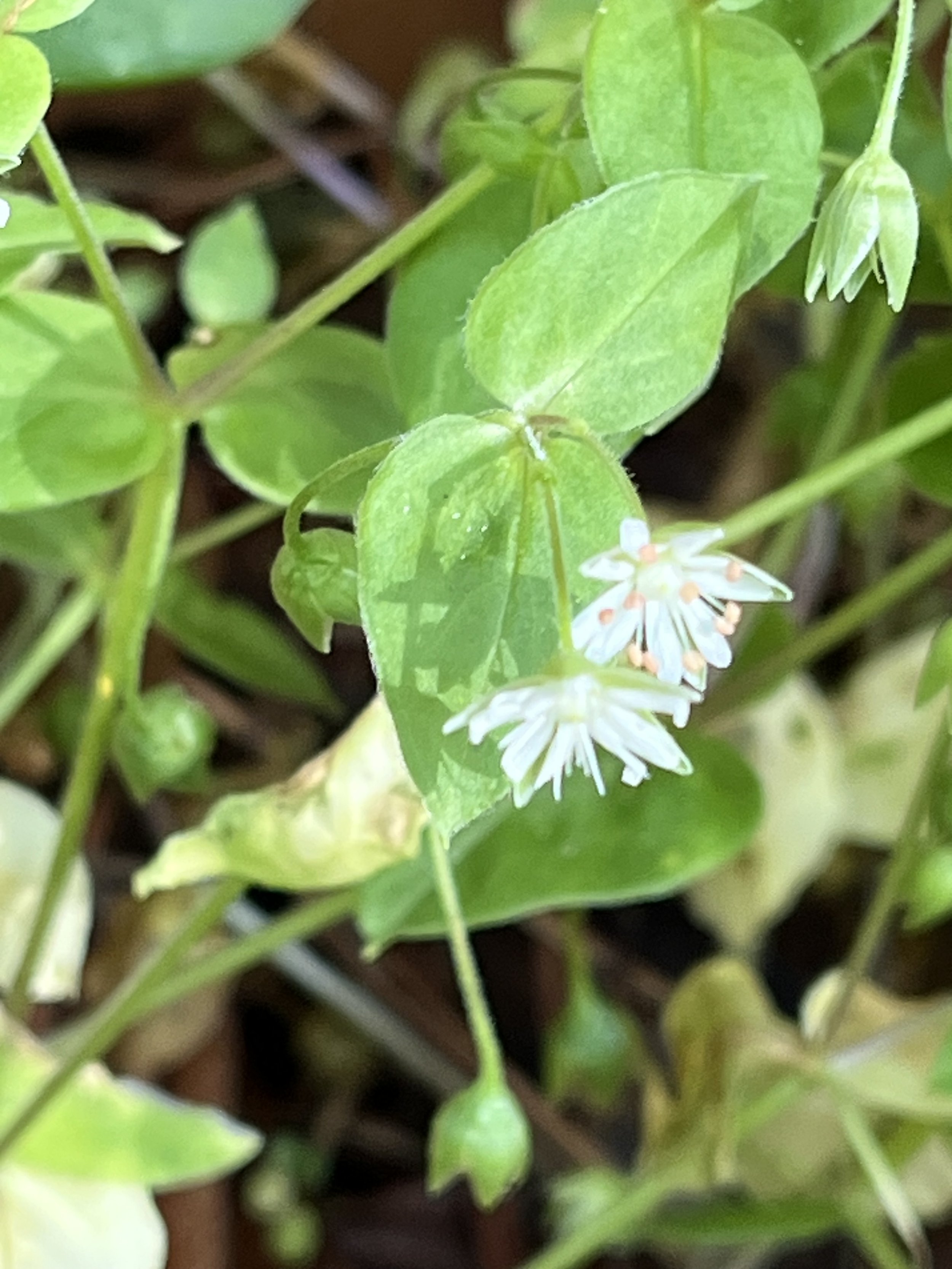Star chickweed ‘Chick-a-Boom’
Common Name: Star chickweed ‘Chick-a-Boom’
Botanical Name: Stellaria pubera
Color: white
Category: Flower, groundcover
Light Requirements: Shade
Mature Size: 6” x 4-16”
Plant Size: 4”
Pot Size: 4”
A name like star chickweed can strike fear in the hearts of gardeners but our native Stellaria pubera knows how to behave. It distinguishes itself from its troublesome relatives by larger, showier blooms and a perennial habit. Star chickweed does well in a woodland garden and is far more likely to spread by slowly creeping along the ground than by seeding in. This diminutive groundcover is common in the nearby woods, often found blooming in the company of green-and-gold, windflower, and dwarf crested iris. The genus Stellaria supports up to 15 lepidoptera species
Common Name: Star chickweed ‘Chick-a-Boom’
Botanical Name: Stellaria pubera
Color: white
Category: Flower, groundcover
Light Requirements: Shade
Mature Size: 6” x 4-16”
Plant Size: 4”
Pot Size: 4”
A name like star chickweed can strike fear in the hearts of gardeners but our native Stellaria pubera knows how to behave. It distinguishes itself from its troublesome relatives by larger, showier blooms and a perennial habit. Star chickweed does well in a woodland garden and is far more likely to spread by slowly creeping along the ground than by seeding in. This diminutive groundcover is common in the nearby woods, often found blooming in the company of green-and-gold, windflower, and dwarf crested iris. The genus Stellaria supports up to 15 lepidoptera species
Common Name: Star chickweed ‘Chick-a-Boom’
Botanical Name: Stellaria pubera
Color: white
Category: Flower, groundcover
Light Requirements: Shade
Mature Size: 6” x 4-16”
Plant Size: 4”
Pot Size: 4”
A name like star chickweed can strike fear in the hearts of gardeners but our native Stellaria pubera knows how to behave. It distinguishes itself from its troublesome relatives by larger, showier blooms and a perennial habit. Star chickweed does well in a woodland garden and is far more likely to spread by slowly creeping along the ground than by seeding in. This diminutive groundcover is common in the nearby woods, often found blooming in the company of green-and-gold, windflower, and dwarf crested iris. The genus Stellaria supports up to 15 lepidoptera species

